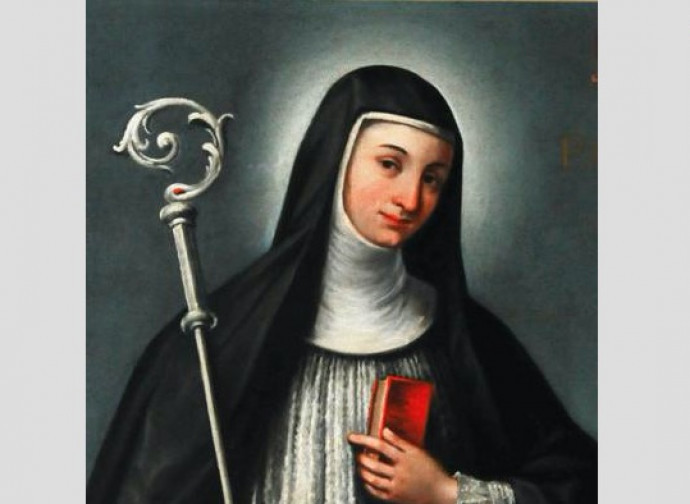Saint Brigid of Ireland
According to three ancient biographies, Brigid's mother was a Christian Pict slave named Brocca, who had been baptised by Saint Patrick; her father was a pagan chieftain, whose name was Dubthach.

"Saint Brigid, keep us on our journey": so the Irish pilgrims and missionaries who crossed continental Europe in the Middle Ages would ask for the intercession of the highly venerated Brigid of Ireland (c. 451-523), co-patron of her Island together with Saint Patrick (c. 387-461) and Saint Columba of Iona (521-597).
The cult of Brigid – who must not be confused with the 14th-century Swedish Saint of the same name, famous for her mystical gifts and her Prayers on the Passion of Christ – is so popular in Ireland that countless traditions associated with her have sprung up over the centuries, together with a vast iconography. Beside some details believed to be legendary, it has been found that as many as 11 characters mentioned in her hagiographies also appear in two books of medieval chronicles (the Annals of Tigernach and the Scottish Chronicle), which place the death of Brigid in the year 523, from which it follows that her birth must date to 451, since it is known that she lived to about 72 years old.
According to three ancient biographies, Brigid's mother was a Christian Pict slave named Brocca, who had been baptised by Saint Patrick; her father was a pagan chieftain, whose name was Dubthach. Since childhood, Brigid showed great generosity towards the poor, to whom she gave milk, butter and flour. She soon realised she had a religious vocation and decided to consecrate her life to Christ, receiving the veil from Bishop Saint Mel of Ardagh († 488).
After some years, Brigid became an abbess and founded monasteries, the best known of which was the Abbey of Kildare (meaning "Church of the oak"), which became an important religious and cultural center, before its destruction in the 12th century. In its scriptorium was kept a splendid illuminated Gospel Book, which has been identified as the Book of Kells (now at Trinity College, Dublin) due to the description made by the historian Gerald of Wales. This is consistent with the attribution to Brigid of the idea of establishing an art school for the decoration of manuscripts.
Brigid is often depicted with a cross made of rushes, the Saint Brigid Cross, which is among the oldest Christian symbols of Ireland. According to tradition, one day some Christians sent for Brigid to convert a pagan lord (perhaps, her actual father) to Christ, while he was on his deathbed. Since it seemed impossible to make the delirious man think straight, the Saint sat beside him and calmly began to console him. She then bent down to collect rushes (which used to be scattered on the earthen floors of Irish houses at the time) and patiently braided them to form a cross. Intrigued, the dying man asked her what she was doing. Brigid then began to explain the meaning of the cross and the death of Christ out of love. While she continued to speak and intertwine, the man's delirium subsided. With growing interest, he asked her other questions about salvation, until he converted and asked to be baptised at the point of death.
Patroness of: children, blacksmiths, unrecognised children, milkmen, sailors, midwives, poets, schoolchildren, nuns, travellers; Ireland




